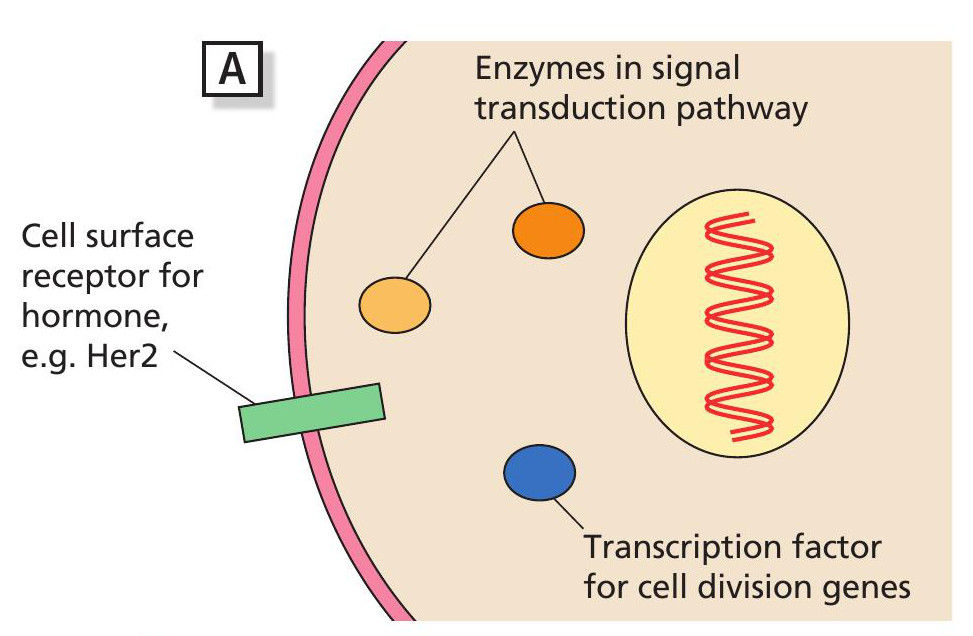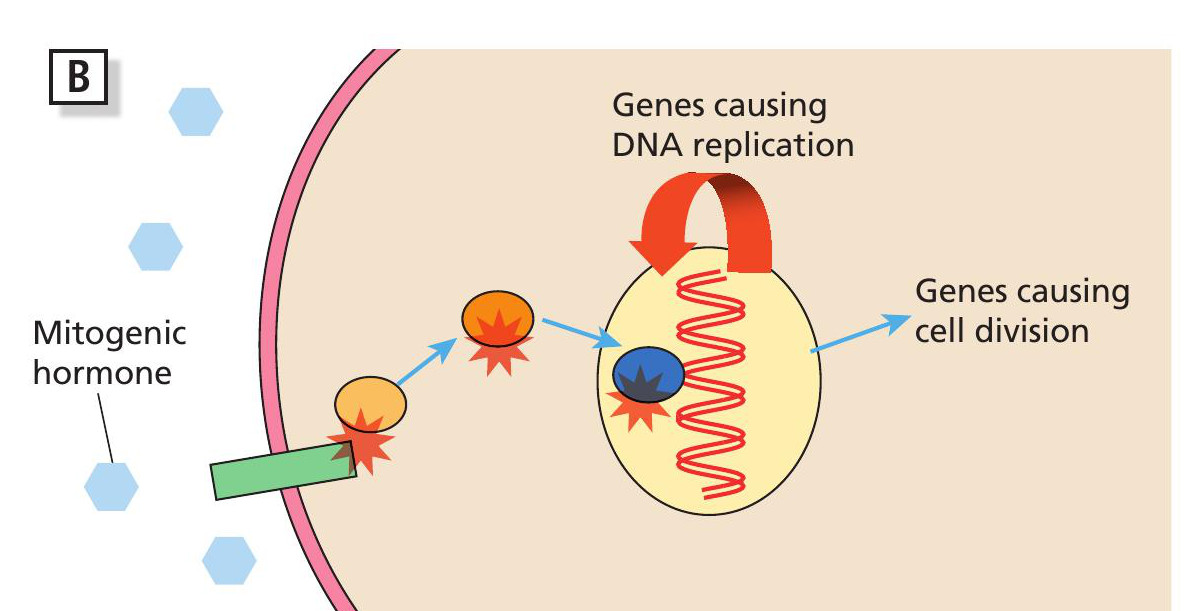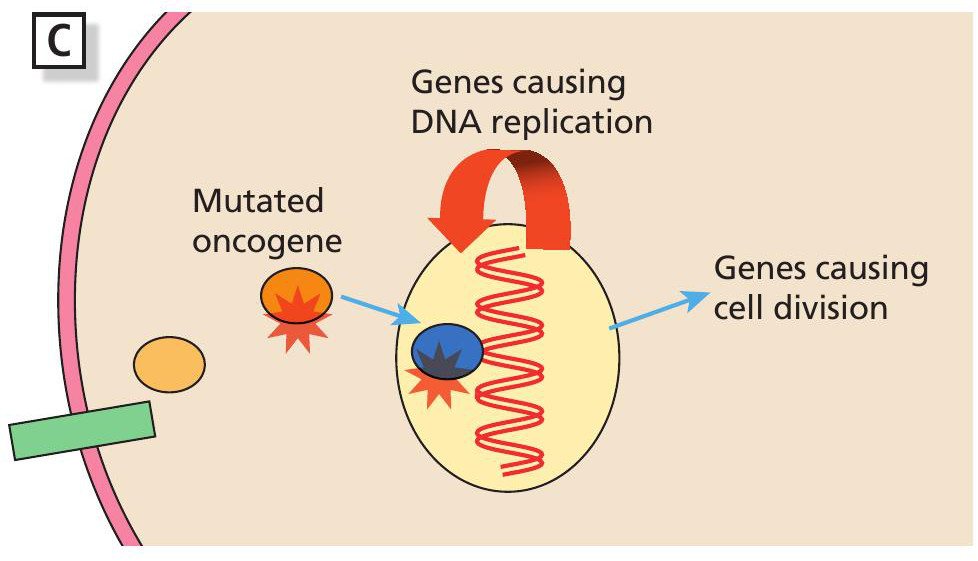


Cancerous tumours form when cells start to grow in an uncontrolled way. Tumours disrupt the function of the organs they grow in, ultimately leading to death. Cancer is a genetic disease caused by mutations in specific genes (see Box 1 and BIOLOGICAL SCIENCES REVIEW, Vol. 20, No. 3, pp. 6–9). Mutations happen when DNA gets damaged and is not repaired properly by the cell. DNA can be damaged by a number of things, such as the carcinogens in cigarettes (see pp. 2–4) and irradiation (for example, by staying out in the sun too long, which is associated with skin cancer). Mistakes can also happen when cells copy their DNA before dividing (see pp. 5–8). Although cells are good at checking and repairing damaged DNA, sometimes errors are copied into the next generation of cells.
When damage occurs in a section of a gene coding for a protein, it can change the amino acid sequence of that protein. This alteration inproteinsequencecanresult in a change in protein function, and this altered function can lead to disease. There are many examples of diseases caused by mutations that alter proteins — muscular dystrophy, cystic fibrosis and sickle-cell anaemia are examples. In cancer, mutations alter the function of genes that have important roles in the control of cell growth.
Your organisation does not have access to this article.
Sign up today to give your students the edge they need to achieve their best grades with subject expertise
Subscribe




